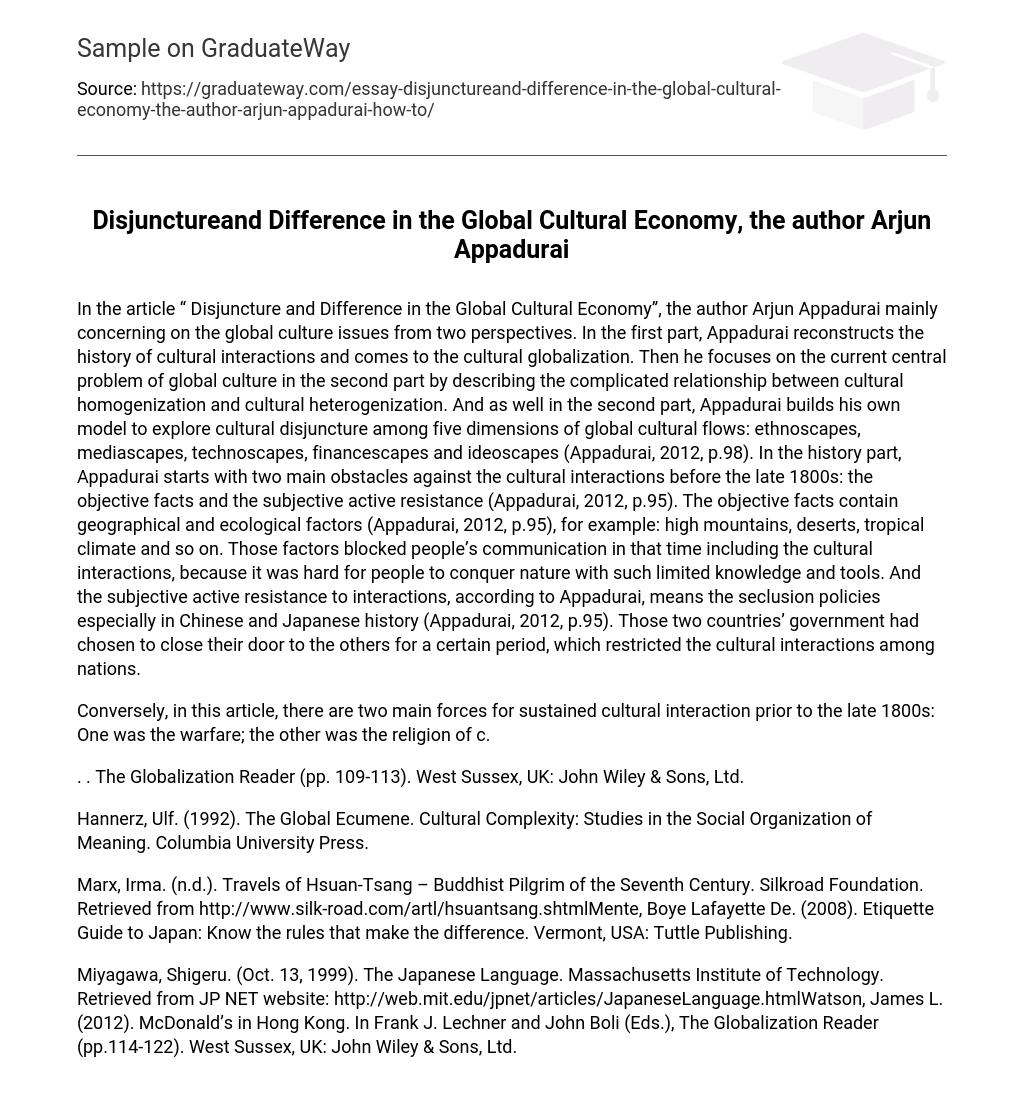The article “Disjuncture and Difference in the Global Cultural Economy” by Arjun Appadurai discusses global culture from two perspectives. The first part focuses on the history of cultural interactions, leading to cultural globalization. The second part explores the complex relationship between cultural homogenization and heterogenization in today’s global culture. Additionally, Appadurai presents his model for examining cultural disjuncture among five dimensions of global cultural flows: ethnoscapes, mediascapes, technoscapes, financescapes, and ideoscapes (Appadurai, 2012, p.98). In the historical context, Appadurai identifies two main obstacles to cultural interactions prior to the late 1800s: objective facts and subjective resistance. These objective facts include geographical and ecological factors (Appadurai, 2012, p.95), such as mountains, deserts, and tropical climates. These factors impeded communication and cultural interactions due to limited knowledge and tools for navigating nature. Subjective resistance refers to seclusion policies found in Chinese and Japanese history (Appadurai, 2012, p.95).Restricting cultural interactions among nations, the governments of two countries chose to close their doors to each other for a certain period.
On the contrary, this article discusses two primary factors that contributed to ongoing cultural exchange before the late 1800s: warfare and the religion of c.
The Globalization Reader (pp. 109-113). West Sussex, UK: John Wiley & Sons, Ltd.
Hannerz, Ulf. (1992). The Global Ecumene. Cultural Complexity: Studies in the Social Organization of Meaning. Columbia University Press.
The article “Travels of Hsuan-Tsang – Buddhist Pilgrim of the Seventh Century” by Marx, Irma is available on the Silkroad Foundation website. Access it at http://www.silk-road.com/artl/hsuantsang.shtml. Another relevant resource is “Etiquette Guide to Japan: Know the rules that make the difference” by Boye Lafayette De Mente, published in 2008 by Tuttle Publishing in Vermont, USA.
Miyagawa, Shigeru. (Oct. 13, 1999). The Japanese Language. Massachusetts Institute of Technology. Retrieved from JP NET website: http://web.mit.edu/jpnet/articles/JapaneseLanguage.html Watson, James L. (2012). McDonald’s in Hong Kong. In Frank J. Lechner and John Boli (Eds.), The Globalization Reader (pp.114-122). West Sussex, UK: John Wiley & Sons, Ltd.





